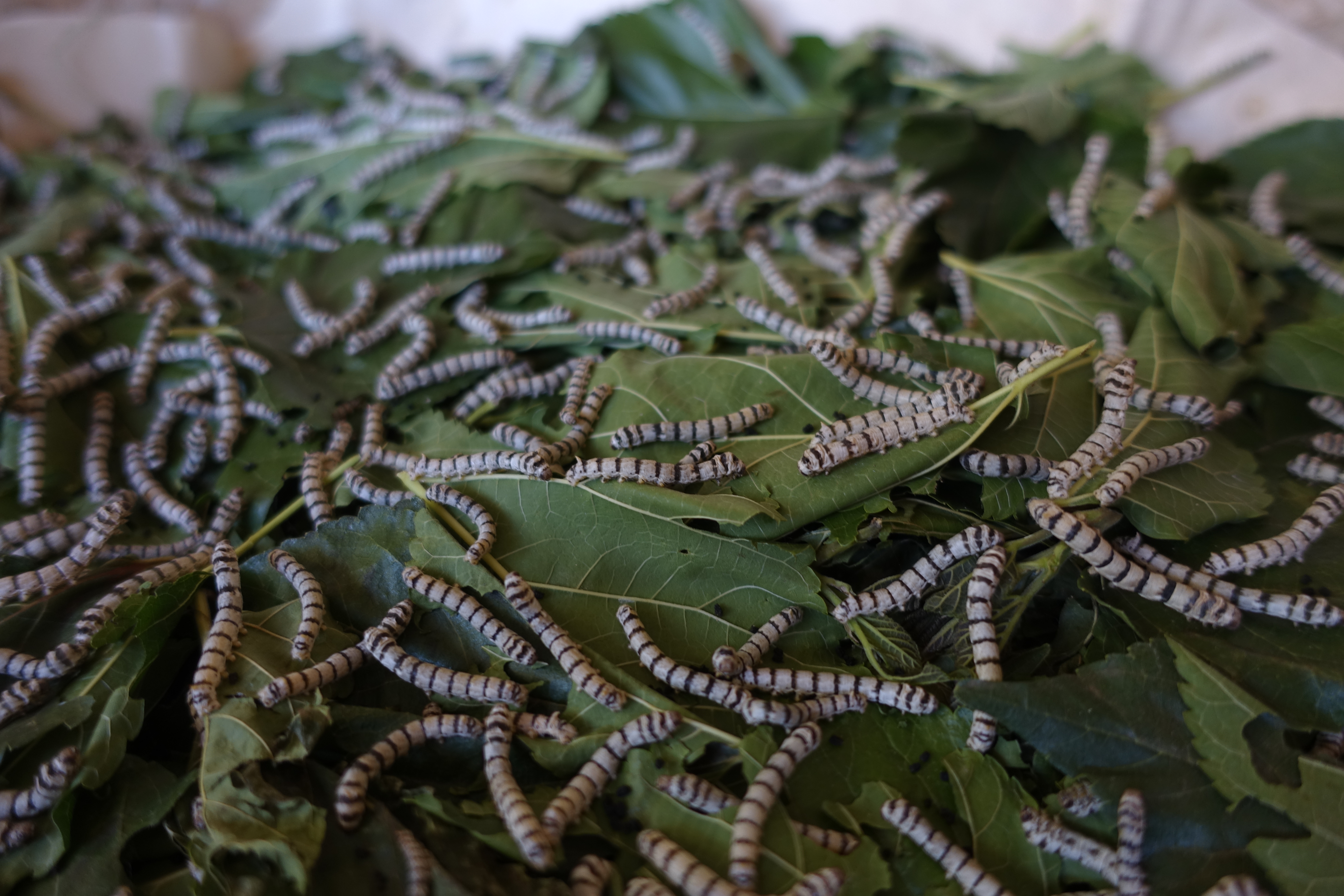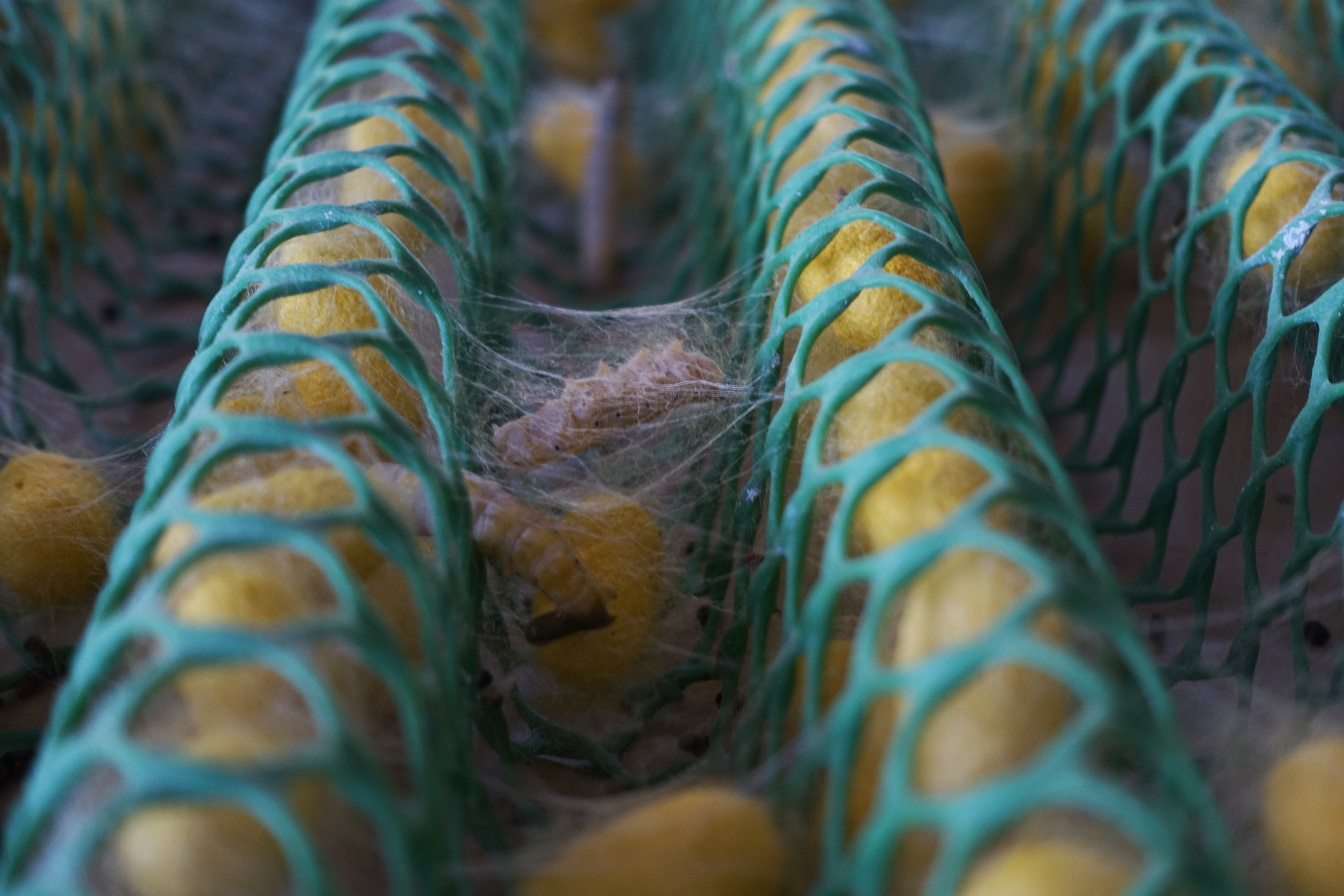Of all the textiles that are made in Thailand, silk is far and away the most well known. The visibility and reputation of Thai silk was carefully curated by both Queen Sirikit and Jim Thompson. But how is Thai silk made? Where does it come from?
Silk Worms
It all starts with worms. Silkworms to be exact. They start out as teeny tiny eggs, slightly larger than the period of size 14 font, and when they hatch they get started on their busy, grueling life of munching away on mulberry leaves.

Once the silkworms are all nice, fat and full they start to spin their cocoons. The cocoon is made from a single thread of silk and if the silkworm’s work is disrupted then they will start all over from the very beginning. Thai silkworms’ cocoons are a distinct yellow color. Chinese breeds of silkworms spin white cocoons.
If the particular silkworm that is a part of the sericulture operation is selected to breed, it will be allowed to continue its metamorphosis into a silk moth, when it will use its saliva to cut a hole in the cocoon allowing it to escape, but also severing the silk thread. If the silkworm is not selected for breeding purposes, the cocoon is put into boiling water, which kills the worm and allows the cocoons to be unraveled and spun into a thicker thread of silk that is useable for weaving. Each cocoon can yield about 300-900 meters of silk and about 2,000-3,000 cocoons are needed to make a pound of silk. The boiled silkworms are often eaten here in Thailand.
Cocoons to Thread to Yarn
One the threads of each cocoon are spun together into one long yarn, the yarn is wrapped into skeins and prepared for the dying process. Traditional dyes were made from plants and barks found in the surrounding environment, with different things producing different deep jewel toned colors. Commercial silk productions today will use synthetic dyes to achieve colors that are more difficult to make from natural dyes.
Weaving into Fabric
One the skeins are dyed, the yarns are threaded onto a loom and woven into a bolt of fabric. Some of the weaving is more intricate while some in more simple. The more intricate the designs, the longer the process and is likely still handwoven. Less intricate designs take less time and may be made with more mechanical looms.





